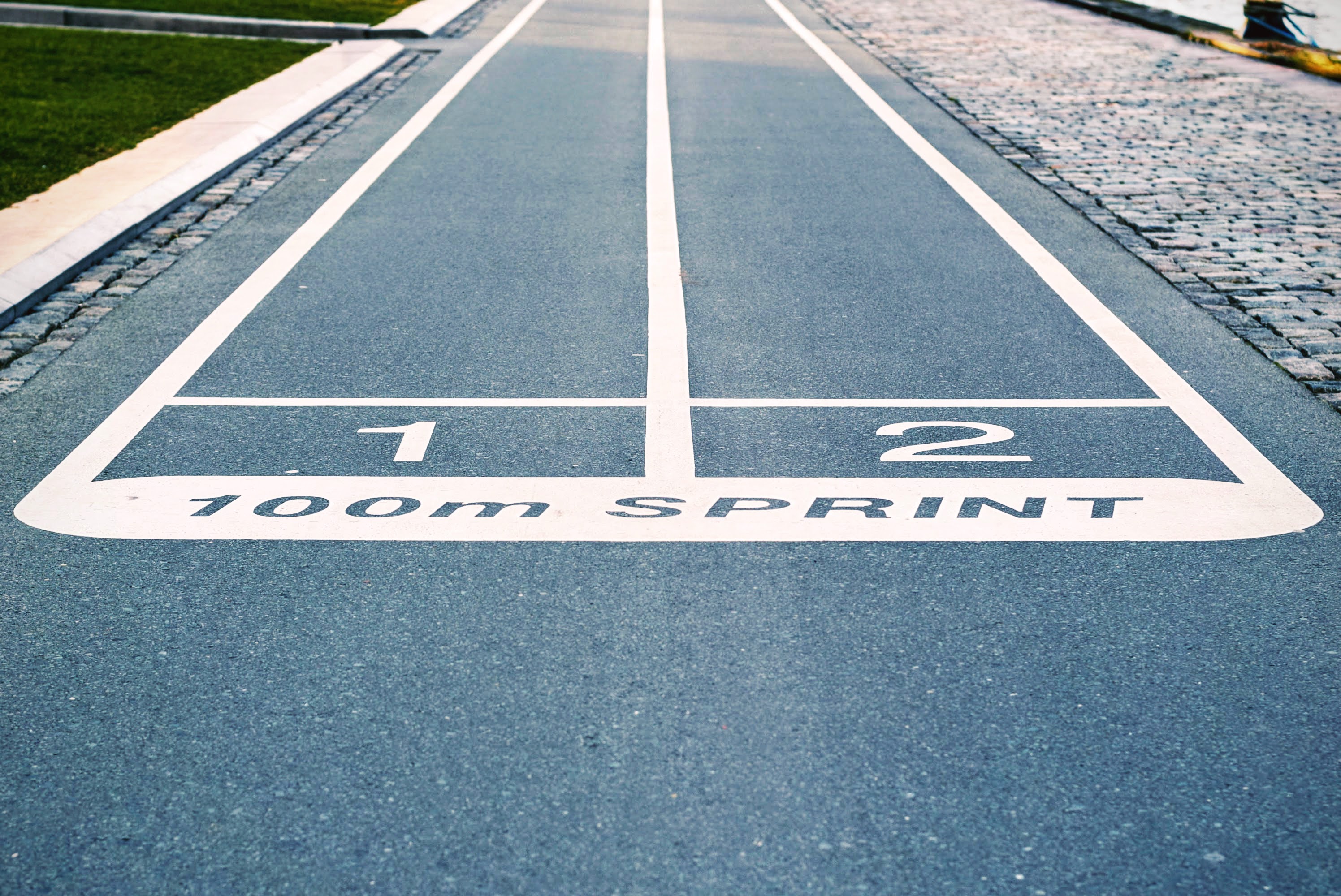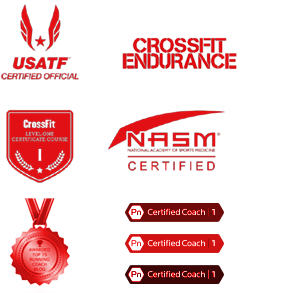If you want to know why your race times aren’t getting better, look no further your training log. The day of the race is not to blame for your results. Looking back three to four months back will help you understand why you do not see results.
Here’s how to avoid common mistakes to run your best race ever.
It all begins with what happened when I met my friend Eric for coffee.
We discussed life, work, and, eventually, running. Eric was signed up for his third marathon and eager to show me his plan.
He’d purchased his training plan through an app on his phone. He explained why he’d modified the plan. He was pumped, working hard, and looking forward to a PR.
Race day came and went. The next time we met, I was eager to hear the results. Bottom line: Eric was not thrilled with the result.
He had several reasons for why the race didn’t go well.
Among them:
“I think my nutrition was off because I cramped up at mile 20.“
“The weather wasn’t awesome that day.”
“My sleep was a mess that week.”
“Not to mention I got blisters on my feet because I wore the wrong socks.”
Excuses, Excuses, Excuses
Have you ever heard (or used!) any of these excuses? Do you think that you did everything correctly leading up to the race? Do you wonder whether you were just plain unlucky on race day?
Luck probably had nothing to do with your disappointing performance.
You probably made one of the following common mistakes.
The good news is the mistakes are easy to fix. I’ll explain how you can get on the path to a PR.
Mistake #1 – You Run Too Fast Too Often
To get faster, you have to run faster. There are secrets when it comes to speed. However, faster is not always better.
My college teammate, Greg, was what we liked to call a “practice hero.”. He would hang with the pack during our intervals, but he would push the pace on the final rep and finish in a damn near sprint. He thought that if he dug deep at the end of a workout, he would have an edge race day.
But Greg missed the point of the workout. When we did intervals at our threshold pace, we were working to build endurance, not speed.
When we would push faster, we would bump ourselves out of the “endurance” training zone and move into speed training.
At that time we needed a high level of endurance. Our speed training would come later. Kicking during an endurance workout will shorten the amount of endurance completed. The workouts would then be in kind of a “gray zone.” We would not get nearly enough volume to help endurance OR intensity to increase speed.
What does all this have to do with you? Plenty.
Runners need to train in phases. When it is time to do speed stick to speed and when it is time to do endurance stick to endurance.
Once you have sufficiently built your systems and running “gears,” then you can have specific workouts that hit multiple stimuli to get you race ready. But first, focus on one area at a time.
The Takeaway
Give yourself time to build the appropriate strength and speed. You may think it can only help to go faster, but spend time in each zone and gain the benefits of training.
Mistake #2 – You Do Not Adapt To Training
My friend Dana does demanding weekly track workouts. But she can’t attend all of them do to her inconsistent schedule. Which leads to inconsistent training and the training becomes random to her body. Not to mention, other runners at the track are training for different races. So the coach of the workouts never delivers anything that is built for Dana. She gets a great workout in each time, but it is not a smart way to spend a hard effort?
If your body does not get a consistent dose of training stimulus, then it will have no reason to adapt.
Improvement comes with consistency. When you are inconsistent with your hard workouts, you will not reap the intended benefits.
The Takeaway
To create a response in your body, you have to create a stimulus to encourage your body to change. The best way to do this is to use progressions. Progressions are a way to build tolerance and allow your body to adapt. You can progress your workouts in several ways:
- Add duration/distance
- Add Intensity
- Add resistance (hills)
- Decrease recovery
Progression Example)
Week 1: 5 x 5 mins @ 8:00 pace – 1:15 min recovery
Week 2: 5 x 6 mins @ 8:00 pace – 1:15 min recovery
Week 3: 5 x 6 mins @ 7:55 pace – 1:15 min recovery
Week 4: 5 x 6 mins @ 7:55 pace – 1:00 min recovery
Progressing your workouts will allow you to see improvement week after week. Train in a particular stimulus zone for 3-4 weeks before moving to a different style of workout. Check in with your fitness after a 3-4 week cycle by hopping in a race or a scheduling baseline test.
Mistake #3 – You don’t use optimal workout stimulus.
There is not one specific way to get faster; everyone has a different path and a different goal. However, to be a well-rounded runner, you must change your stimulus.
Doing so will help you:
- Find your strengths and weaknesses.
- Keep training fun and fresh.
- Determine how you respond to different workouts.
- Build proper strength and stamina.
The workouts you need to do:
Threshold
Threshold intervals are where you walk the line between your aerobic (using oxygen for energy) and anaerobic system (not using oxygen).
Workout Characteristics:
- Improve endurance.
- Faster than half marathon pace, slower than 10k pace.
- Feel comfortable but hard.
- Duration: Over 5-15 minutes per rep – Rest 1:00-3:00 min.
Threshold Workout Example:
3×8 min @ threshold pace – 1:15 recovery
*create content upgrade*
Interval
An “interval” workout get you into that pain cave. The reps will be shorter, but the intensity goes up. So, these are fast, and they are hard!
Workout Characteristics
- Improve Running economy.
- Develop lactic tolerance.
- Faster than 5k race pace slower than mile race pace.
- 1:1 recovery and should be done with a slow jog.
Interval Workout Example:
4 x 800 @ Sub 5k race pace – 2:30 recovery
Fast Rep
Here is when you work on top end speed. Doing fast reps will make you a faster sprinter.
Workout Characteristics
- 95-100% of you full sprint pace.
- Improve efficiency.
- increase your sprinting pace.

- Improve running form.
- 1:1 or 2:1 recovery – You should be near full recovery after each.
Fast Rep example:
6 x 200 @ 95% sprint – rest 60-90 secs
Tempo
A tempo run is one sustained effort for a long period. The pace will stay in your aerobic zone which will allow you to run for a long duration to improve your endurance.
Workout Characteristics
- Improve endurance and aerobic ceiling.
- Marathon or half marathon pace.
- Challenges mental toughness.
- One long training rep from 15-60+ mins.
Tempo Workout Example:
2 mile warm up
25 mins @ Half marathon pace
2 mile cool down
Progression run
A progression run is a way to help you build “gears.” The run will include multiple paces for you to hit for extended periods during the run.
Workout Characteristics
- The paces should shift from easy to no faster than half marathon pace.
- Improve endurance.
- Learn the difference in pace.
- Helps prepare for faster running.
Progression Run Example:
5-mile run
- 3 miles easy
- 2 miles at Marathon pace
*After a full training cycle, look back to see which stimulus created the best response for you.
Mistake #4 – You Do Not Recover, And Your Sleep Is A Mess
You think runners can bounce back by not running. You will get some recovery benefits by resting, but there are extra ways you can improve recovery.
Getting consistent and quality sleep is easily the best way to improve your recovery. Sleep is your body’s time to regenerate and repair. While running, we break ourselves down mentally and physically.
If you want to go hard during the day, you need to sleep hard at night.
Sleep can often be something that we feel we have no control over. It can feel like the obligations you have through the day cannot be changed. Even if you can’t get to bed earlier or sleep later, there are ways you can improve your quality of sleep.
The Takeaway
Here’s how to improve your sleep:
– Create a nighttime ritual to help shut the body down.
– Limit screen time on your phone and TV.
– Limit evening water consumption to avoid bathroom breaks.
– Use of natural sleep enhancers such as ZMA and Melatonin.
Mistake #5 – You Don’t Lift Heavy
I know you are a runner, so you don’t want to get bulky or add extra weight from muscle. Here’s a newsflash: it is way harder to get jacked and “bulky” than you think.
If it were easy to add muscle, there would be WAY more yoked (‘bro’ term for muscular) people walking the streets. But for the most part, people are not yoked.
The Takeaway
Lifting heavy is a great way for runners to recover because it will elicit a hormonal response from the body that will help you rebuild. Your body will release natural hormones like HGH and testosterone when it encounters extreme stress. Running is not intense enough for your body to send in extra hormones to help recover. Throwing in squats or deadlifts 1-2 times a week will give your body the hormonal jump start.

This means reps that you can not do more than five times. I see runners all of the time trying to improve their “muscular endurance” by using light weights while lifting.
Lifting light weights will not improve your endurance more than running, so don’t even bother lifting lightweight at the gym. If you are adverse to heavy lifting or do not feel comfortable with your form, then spend your time doing yoga or soft tissue work or any other kind of physical activity.
How to Lift Heavy
- Sets of 2-5 with HEAVY weight.
- Longer rest durations.
- Release of recovery hormones.
Heavy Lift Example:
5 set of 2 reps back squat at 90% of your one rep max.
Mistake #6 – You Do Not Make Time For Self-Care
Getting on a foam roller or lacrosse ball is the easiest way for a runner to take control of their recovery. When you have an ache or pain, chances are you have an impingement or tightness.
Using soft tissue self-care will help you determine where the problem areas are in your body and you can work toward improving those areas.
Best Soft Tissues Practices for runners
Mistake #7 – You Lack Direction
All of this information is not a secret. Any runner could access this info at any time, so why is it still so hard for athletes to improve and achieve their goals?
The number one reason I have found athletes do not reach their goals is not injury or lack of talent: It is lack of direction and structure.
It is not hard to improve your fitness. However, It is hard to stay on the course of action long enough to see change and to trust the process. I know runners who will add runs or change workouts based on what they have seen their friends do on Instagram or an article they read about a professional runner.
I have news for you. You are not those people! You are you.
Everyone has a different goal. To achieve your goal, you need to use context from your day to day life to create the best course of action. Flipping and flopping your workouts based on the trend du jour will keep you running in place. Even worse is changing your direction based on your insecurities about your training.
Pick a direction and stick with that direction. You have to commit to at least twelve weeks. Focus on one process and believe in the desired outcome.
As a coach, I help keep people pointed in the right direction, where runners have a question, I assist them to determine the best course of action.
If you want to see how much you can improve with some direction and guidance take action today.

